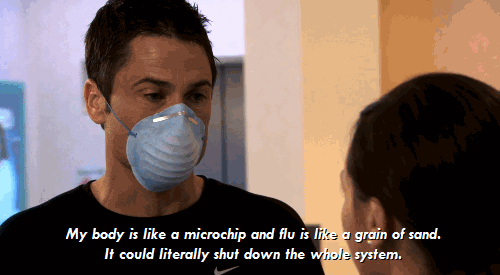Supply Chain Failures and Dual Power

Remember that old saying, "The best time to buy your Christmas presents was last year, the second best time was 11 months ago?" Isn't that the saying? Anyway. Supply chain issues across the American economy and the world persist, set off by COVID and exacerbated by public response to stagnant wages, working conditions, and basically all of us living in a pandemic hellscape. Of particular issue, supply chain disruptions are affecting energy abroad. With winter fast approaching, many countries are struggling to prepare for the increase in demand of natural gas, and it's making many lean on coal. Not great. It's a natural progression, though–you can't rush to build more solar power plants thinking they'll get you through the winter, since that's traditionally not a great time for sunlight.
It's troubling that governments are turning back to coal amid these shortages for two reasons: first, it shows that we're only a bad day away from a backslide on our trek to renewable energy, which means the chances of hitting our greenhouse gas emissions target are slim; and second, it underscores just how unprepared governments are for a shock like COVID. Last winter, all of Texas froze over and more than seven hundred people died because ERCOT, the brain trust behind the Texas power grid, was unable to keep the lights on. Now imagine that happening to an entire nation.
It bears repeating that you cannot trust the government, or a power company, will be there when you need them. Guaranteed there will be more occasions, of one nature or another, that recreate supply line failures that will reach you–if those circumstances haven't already. Something, somewhere, will fail. Beyond just the uncertainty of the fuel supply, we're not far from the two-year anniversary of the start of the pandemic here in the states, and we still can't keep food and necessary goods on the shelves. We can expect these local panics and scarcities to continue for the duration of the pandemic–should it ever actually end.
Why Supply Chains Fail
You've probably heard all this before, but it underscores some of the message of this newsletter. Our economy, years ago, became predicated upon a system of supply called Just-in-Time (JIT), that minimized overhead and thereby maximized profit. How this occurs is, basically, a company will only keep precisely what they think they need of X product on-hand, and have a delivery of more X set for exactly when they predict they'll run out of X, and not a minute before. This reduces storage costs and, in a perfect world, has zero drawbacks. But when one company moves to JIT, this ripples out–the supplier of X has to then scale back and only produce what they think they'll be able to sell, which means the company that creates the Y component for X also has to draw back, etc., etc. which in a perfect world is still only reducing overhead for everyone, right up until we hit a pandemic.
In a lot of ways, JIT is a good thing, because it is efficient. Reduced cost can make its way to the consumer, which is nice, and efficiency as an abstract idea–a less wasteful means of production and consumption–is obviously good when we're thinking about having limited resources. But a highly efficient thing is an extremely brittle thing.

Familiar, right? Efficiency requires reliability. Demand for a product must be predicted accurately, supply anticipated, and any shift must be accounted for or things go sideways.
When things go sideways, you wind up with what happened to us. The best example, I think, is in agriculture. Millions of pounds of potatoes went to waste at the start of the pandemic because those potatoes were meant for restaurants, not grocery stores, and there were no logistics in place to make that swap. It may seem like a no-brainer, but when you think about JIT, you realize that this system, at a hundred different steps, was geared for shipping directly to, as an example, TGI Friday's. They had trucks that would pick up the potatoes from a distributer, who sold only to restaurants, who picked those potatoes up from a farming conglomerate that sold only to that distributer. When TGI Friday's needed no potatoes because no one was going to TGI Friday's, those potatoes at the distributer–and more at the farm–could not simply get picked up and sent to a grocery store because none of those logistics were in place. Does it make sense that millions of pounds of food were wasted instead of being given away? No, not really. Does it make sense if you're a capitalist? Yes.
The same thing happened to toilet paper. And paper towels. And, obviously, other goods. It's not that the products did not exist–it's that they were bound for non-home uses. Up until now, the efficiency of JIT made this specialization and rigidity worthwhile. But when our economy is regularly upended by disasters, by disease, by scarcities that aren't supply chain-related, as we're going to find increasingly often, the lean nature of JIT is dangerous.
An Old, New Supply Chain
Rather than simply tell you to put more beans in your pantry (which you should do. Food-grade buckets, mylar bags, dry beans), I want to talk about the kind of supply chain we can establish in our own communities. While it's difficult to do the work of establishing an entire underground economy while the current economy is in place and–nominally–functional, this is what we should be attempting. Dual power–the development of a secondary institution that subverts and eventually replaces the initial institution–is a tool of leftists that allows us to correct societal wrongs even while existing (mostly) within that society, winning the public over simply by providing for their needs. Moreover, in an emergency or state of collapse, having an established structure will be invaluable for the lives and safety of your community. This is why we should make some moves now.
So, while it's easy enough to say do these things and much harder to actually do them, I'm saying...do. Do begin by having enough supplies that you can give to others. Do garden, do preserve the food you grow via canning, fermentation, etc. Do give out both fresh and preserved foods (if you're secure in your techniques for the latter). Start a community pantry–either by setting up a refrigerator from which people can give and take what they need, or by regularly showing up in your community with free food. A lot of this, of course, doesn't need to be you from the ground up. While all organizations are imperfect, you'll be making a pretty minor impact if it's just you out there, so look for others already doing this work. Look for mutual aid organizations, look for Food Not Bombs. Give your time, your money, your produce. Beyond food, you can provide menstrual products, diapers, first-aid items. You can teach people skills. This method, a gift economy that exists solely within the community, is fragile in ways that JIT is not–because there aren't 300 million people behind it–but it's stronger than JIT in others. There aren't multiple points of potential failure. There's very little (ideally) waste. Needs can be communicated directly so there is no worry about accurately predicting demand or supply. And, eventually, as this endeavor gets bigger, as your pool of skills from the community increases, you can provide more and more for your friends and neighbors.
When we're well-positioned as individuals, a supply chain failure, a disaster, or a collapse, can become an opportunity–not to say that any of the above are good things–but they provide us with a chance to do better than we were before. In the absence of authority, after disasters, how often do people save each other? How often do we stick our necks out for one another? More often than we turn away–no matter what the news tells you, or the worst cases we prepare for. When things fall apart, it can be you that steps in and helps bring your community together, and you can help make your community more resilient, more sustainable, and happier than it was before.
